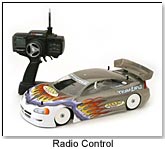
April 5, 2025


Article Synopsis
|
The key word in today’s hobby industry is “diversity.” Since the market includes everything from crafts to radio control, consumers can be assured that their hobby will be represented, and hobby companies are working to adapt their supply to meet the demand.
“The hobby industry is more than just one industry,” explained Seth Greenberg, CEO of eHobbies, which is based in La Mirada, Calif. “Hobbies for us is radio control, it’s trains, it’s slot cars, die cast, plastic … we have about 14 different categories that comprise our hobbies. Some categories keep growing, others are flat … we’re able to work new categories in. We’re trying to attract a wide audience, so we’re not dependent on one niche.”
As some trends rise in popularity, others lose favor. Greenberg noted that they have dropped coins, stamps, and magic because demand for such products has waned.
 When it comes to the toy industry, one person’s toy is another person’s hobby. According to Greenburg, there is more of a crossover now between the two. “You have low end radio control, which are made by the toy manufacturers, and then you have hobby manufacturers doing the same thing with toys,” he explained. “Some of the toy manufacturers are starting to become aware of the hobby business, and they’re starting to develop lines to go into specialty stores like ours, and vice-versa with the hobby business. Some of the hobby manufacturers are trying to break into the toy distribution channels.”
When it comes to the toy industry, one person’s toy is another person’s hobby. According to Greenburg, there is more of a crossover now between the two. “You have low end radio control, which are made by the toy manufacturers, and then you have hobby manufacturers doing the same thing with toys,” he explained. “Some of the toy manufacturers are starting to become aware of the hobby business, and they’re starting to develop lines to go into specialty stores like ours, and vice-versa with the hobby business. Some of the hobby manufacturers are trying to break into the toy distribution channels.”
On the craft end of the hobby market, the Hobby Industry Association reports that crafting has grown from a $23 billion business in 2000 to $29 billion in 2004. In fact, the 63rd Annual HIA Convention and Trade Show in Dallas, Texas in February of this year was a sell-out for exhibit space for the first time in 10 years. Crafts and hobby products from 1,159 manufacturers and wholesalers were on display in 3,049 booths.
According to Don Meyer, director of marketing and public relations at HIA, the most popular craft is currently scrapbooking. “There are about 25 million scrapbookers in the United States,” he said. “That’s an increase of about 5 million over the prior year. It’s an activity that people of all ages participate in. Baby boomers are looking to capture the memories of their lives and their children’s lives, and in some cases their grandchildren’s lives. The Generation X group is starting families and buying new homes and having a lot of firsts in their lives. Even the 20-somethings and the early college and late high school-age scrapbookers are involved because of the technology aspect of scrapbooking. They’re using items like digital cameras and photo software and color printers and photo paper and things that they’ve grown up with. They’re doing it for the same reasons as the other two groups, but they’re just employing some of the tools that they’ve grown up within the activity.”
Meyer noted that another popular activity is beading/jewelry making, which is a trend for the younger generation, from tweens to 20-something’s.
“Knitting is another activity which has had a considerable renaissance over the last three to five years,” Meyer said. “It’s an activity that’s considered somewhat old-fashioned, very often handed down from generation to generation. It had been a bit on the decline at the end of the 1990s, but as we’ve evolved as a society over the last few years and people have looked for ways to relax and looked for ways to express their creativity, knitting has really had an upsurge in popularity.”
Meyer noted that another reason for the knitting trend is that celebrities have become interested. Actresses such as Julia Roberts, Cameron Diaz, and Sarah Jessica Parker knit to relax on the set, and the interest trickles down to their fan base.
As with other hobbies, there is a certain amount of crossover from crafting to toys. Some examples include candy making, cake decorating, and painting, which are considered craft activities, but are also well-represented in toy stores.
“I think there are a lot of correlations between crafts and toys,” Meyer said. “Maybe characterizing them as toys is a little easier way to get a child involved -- instead of just playing with a static toy, they’re actually using their mind, they’re using their creativity, they’re using their hands and developing hand-eye coordination. Crafts are a great crossover toy, if you will, for kids of all ages.”
Copyright © 2025 TDmonthly®, a division of TOYDIRECTORY.com®,
Inc.